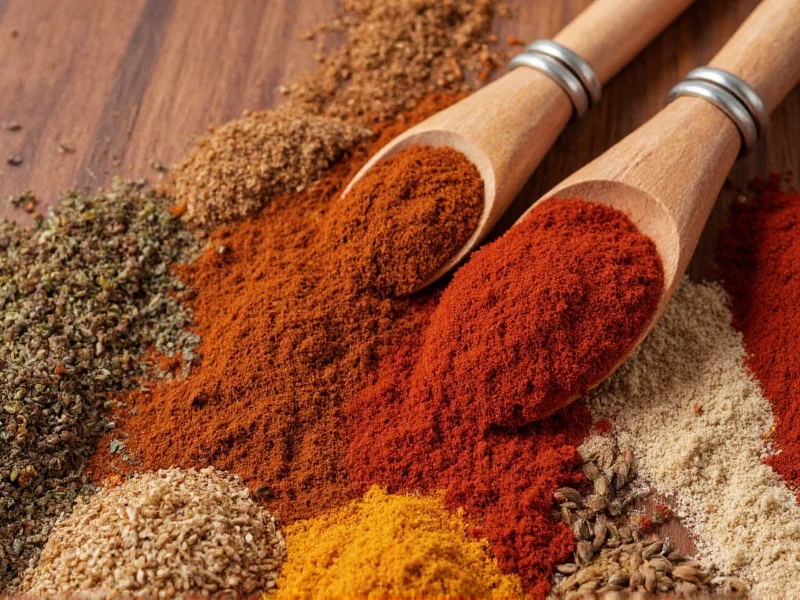Understanding spice shelf life is essential for maintaining culinary quality in your kitchen. While dried spices won't make you sick when they"expire," their diminished flavor can significantly impact your cooking. This comprehensive guide explains exactly what happens to spices over time, how to maximize their shelf life, and when it's truly time to replace them.
The Science Behind Spice Degradation
Spice degradation occurs through three primary processes: oxidation, moisture absorption, and volatile oil evaporation. Whole spices like peppercorns or cinnamon sticks retain their essential oils longer because their protective outer layers remain intact. Once ground, these protective barriers are broken, accelerating the loss of aromatic compounds. Research from the National Center for Home Food Preservation confirms that ground spices lose 20-30% of their volatile oils within the first six months of opening.
Shelf Life Comparison: Whole vs. Ground Spices
| Spice Type | Whole Form Shelf Life | Ground Form Shelf Life | Peak Flavor Period |
|---|---|---|---|
| Peppercorns | 4+ years | 2-3 years | First 18 months |
| Cinnamon | 3-4 years | 1-2 years | First 12 months |
| Cumin | 3 years | 1-2 years | First 10 months |
| Paprika | N/A | 1-2 years | First 8 months |
| Curry powder | N/A | 1-2 years | First 6 months |
How to Determine If Your Spices Have Lost Potency
Don't rely solely on package dates to determine if spices are still good. Instead, perform these simple tests:
- The smell test: Rub a small amount between your fingers and smell. Fresh spices should have a strong, distinctive aroma. If you can barely detect any scent, they've lost significant potency.
- The color check: Compare to a fresh sample if possible. Faded color, especially in paprika and chili powder, indicates diminished quality.
- The taste test: For non-potent spices like cinnamon or nutmeg, a small taste can reveal if they've become bland or developed off-flavors.
Proper Storage Techniques for Maximum Shelf Life
How you store spices dramatically affects their longevity. Follow these evidence-based storage recommendations:
- Use airtight glass or metal containers instead of the original plastic bottles, which often have permeable seals
- Store in a cool, dark cabinet away from your stove, oven, or dishwasher
- Maintain consistent temperatures below 70°F (21°C)
- Avoid storing spices above 75% humidity environments
- Never store spices in the refrigerator unless specifically recommended (moisture causes clumping)
When Spices Actually Become Unsafe
While rare, certain conditions can make spices unsafe. Discard spices immediately if you notice:
- Visible mold growth (appears as fuzzy spots)
- Moisture clumping that doesn't break apart
- Unusual odors beyond simple fading (sour, musty, or chemical smells)
- Pantry insect infestation signs (webs, larvae, or adult insects)
These issues typically occur only when spices have been exposed to moisture or stored improperly for extended periods. Properly stored dry spices remain microbiologically safe indefinitely, though their culinary value diminishes significantly over time.
Maximizing Flavor in Cooking with Older Spices
If you're working with spices that have lost some potency, these techniques can help compensate:
- Toast whole spices in a dry pan before grinding to release remaining oils
- Use 25-50% more spice than your recipe calls for (taste as you go)
- Add spices earlier in the cooking process to allow more time for flavor extraction
- Combine older spices with fresh ones for balanced flavor profiles
Environmental Impact of Spice Waste
Understanding spice shelf life isn't just about flavor—it's also an environmental consideration. The Food and Agriculture Organization estimates that 17% of global food production ends up as waste. By properly storing spices and understanding their actual shelf life, home cooks can significantly reduce unnecessary disposal. Consider implementing a "first in, first out" system in your spice cabinet to ensure older spices get used before newer purchases.
Practical Tips for Spice Management
Create a sustainable spice rotation system with these professional techniques:
- Label all containers with purchase dates using masking tape
- Store spices alphabetically to easily identify older stocks
- Keep frequently used spices at eye level for regular rotation
- Consider buying whole spices in bulk and grinding small amounts as needed
- Use clear containers to monitor color changes over time
FAQs About Spice Shelf Life
Can consuming old spices make you sick?
Properly stored dried spices don't become unsafe to consume as they age. They lose flavor and potency but remain microbiologically stable. Discard only if you notice mold, moisture clumping, or insect infestation.
How can I extend the shelf life of my ground spices?
Store ground spices in airtight glass containers away from heat and light. Purchase smaller quantities more frequently, and consider freezing rarely used spices in vacuum-sealed bags to preserve volatile oils for up to 50% longer than room temperature storage.
Do all spices lose potency at the same rate?
No, different spices degrade at varying rates. Delicate spices like paprika, chili powder, and garlic powder lose potency fastest (within 1-2 years), while more stable spices like pepper, cinnamon, and cloves maintain quality longer. Whole spices consistently outlast their ground counterparts by 30-50%.
Is it worth buying spices in bulk to save money?
For frequently used spices, bulk purchasing can be economical if you have proper storage. However, for spices used infrequently, buying small quantities more often ensures maximum freshness. Calculate your usage rate before purchasing larger amounts to avoid wasting money on degraded spices.
Can I revive old spices that have lost flavor?
You cannot fully restore lost potency, but toasting whole spices in a dry pan before grinding releases remaining essential oils. For ground spices, incorporating them earlier in cooking gives more time for flavor extraction. However, significantly degraded spices should be replaced for best culinary results.











 浙公网安备
33010002000092号
浙公网安备
33010002000092号 浙B2-20120091-4
浙B2-20120091-4